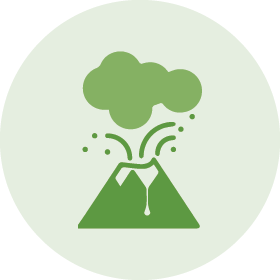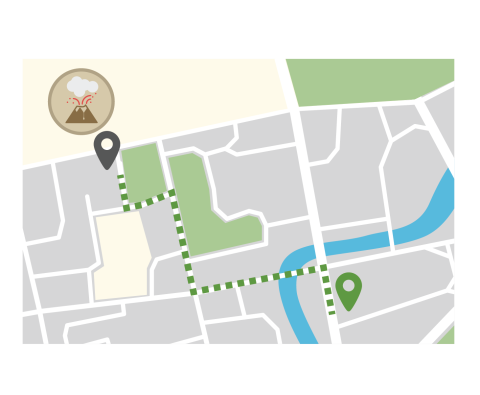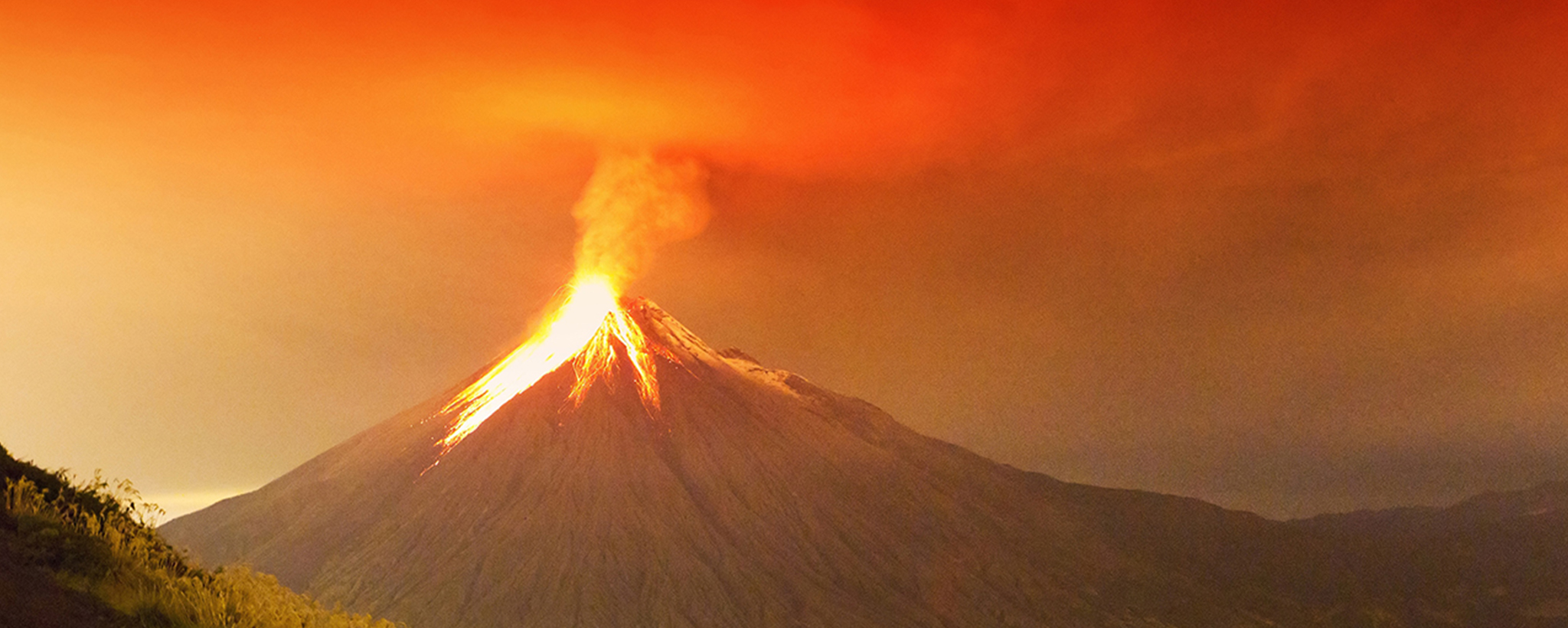Words to Know
Am I at Risk?
What Can I Do?
Learn More
A volcano is an opening in the Earth’s crust that allows molten rock, gases, and debris to escape to the surface.
A volcanic eruption may release acid, gases, rocks, and ash into the air. Lava and debris can flow at up to 100 miles per hour, destroying everything in their path. About 11 percent of the world’s active volcanoes are located in the U.S., which has approximately 170 volcanoes. These volcanoes are both active and dormant. Earthquakes, flash floods, landslides, debris and mudflow (lahar), or acid rain may happen at the same time as a volcanic eruption.
Words to Know
Ash - Fine fragments (less than 2-4 mm) of volcanic rock. Volcanic ash is gritty, abrasive, and can be corrosive.
Eruption - A sudden, violent outburst, like an explosion.
Lava - Molten rock that comes from a volcanic explosion and the rock that results after it has hardened and cooled.
Lava Rock - Volcanic lava that has hardened after it has cooled.
Molten - Made liquid by heat, melted.
Dormant - Dormant volcanoes no longer erupt. However, they might erupt again in the future.
Lahars - Also called mudflow or debris flow, it is a mixture of water and volcanic debris that moves quickly downstream.
Lava Flow - A slow moving river of molten (liquid) rock that pours from a volcanic eruption.
Magma - Molten rock beneath the surface of the earth.
Pyroclastic Flow - A thick, fast-moving, and extremely hot avalanche of ash, pumice, and rock. It can move up to 50-100 mph.
Am I at Risk?

Alaska, Hawaii, California, and Oregon have the most active volcanoes. However, other states and territories also have active volcanoes. Volcanic ash can travel hundreds of miles and cause severe health problems.
What Can I Do?
Before
- Build an emergency kit. Include items that you will need if you have to evacuate quickly.
- Make a family communications plan.
- In addition to all hazard supplies, include: goggles, N-95 disposable mask, long-sleeved shirts, long pants, and supplies to seal ash out of your home.
- Since volcanic ash may ruin water supplies, include additional supplies of water.
- Learn about your community’s volcanic eruption warning systems and emergency evacuation plans. Many communities have sirens to alert public of a possible volcanic eruption.
- Learn about the U.S. Geological Survey (USGS) Volcano Hazards Program alert-level system:
- NORMAL (green): Volcano is in a noneruptive state, or has returned to a noneruptive state after a higher level of volcanic activity.
- ADVISORY (yellow): Volcano is showing signs of heightened activity above known background level. An advisory (yellow) could also mean that volcanic activity has decreased significantly after being at a higher level, but continues to be closely monitored in case it returns to a high level.
- WATCH (orange): Volcano is showing higher unrest with increased potential of eruption, timeframe uncertain. A watch could also mean that an eruption is underway but poses limited hazards.
- WARNING (red): Hazardous eruption is imminent, underway, or suspected.
During

- Follow the evacuation order issued by authorities. Evacuate immediately from the volcano area. You may be asked to evacuate early to provide time to leave the area while routes are available.
- Look out for a flowing river of mud (mudflow). Look upstream before you cross any bridges to make sure a mudflow is not coming. If it is, do not cross the bridge. The mudflow could destroy it.
- For lahars—move to high ground off valley floors.
After
- Listen to safety officials.
- Text, don’t talk. Unless there’s a life-threatening situation, send a text so that you don’t tie up phone lines needed by emergency workers. Plus, texting may work even if cell service is down.
- Know that it’s normal to feel anxious or stressed out. Everyone reacts differently to stressful situations. Take care of your body and talk with your parents or other trusted adults if you are feeling upset.
Learn More
Did you know?
Volcanic ash….
- is made up of tiny jagged rock and glass
- can block sunlight and sometimes come with lightning
- can pile up like heavy snowfall but doesn’t melt or dissolve in water
- can clog and jam machinery (including aircraft), causing damage
That’s why it’s important to keep and wear a N-95 dust mask and eye goggles or glasses (not contact lenses) if you are in a volcanic ashfall area! Wear long-sleeved shirts and long pants to help reduce exposure.


